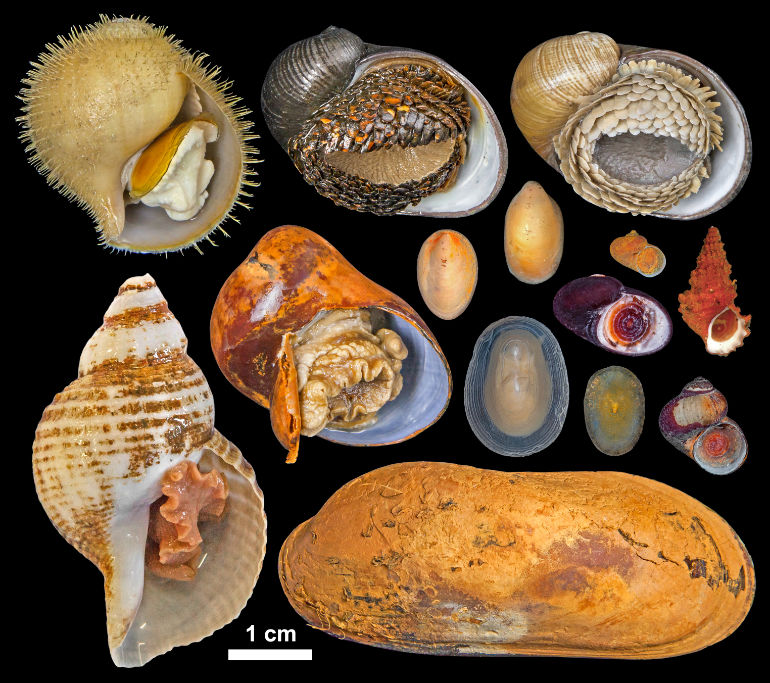Eco & Environment, Nature & Wildlife | Posted on December 9th, 2021 | return to news
Almost two-thirds of species at deep-sea hydrothermal vents are at risk of extinction
New research has revealed that almost two-thirds of species at deep-sea hydrothermal vents are at risk of extinction.

New research from Queen’s University Belfast has led to 184 deep-sea species being added to the global Red List of Threatened Species. With almost two-thirds of the species assessed listed as threatened, it highlights the urgent need to protect them from extinction.
The deep sea is the largest environment on Earth with thousands of unique species living in extreme habitats. The remoteness of these seafloor habitats means they are often understudied, making it difficult to understand and communicate their conservation requirements.
Hydrothermal vents are unique deep-sea ecosystems. Vent habitats host a similar density of life as tropical rainforests and coral reefs. There are approximately 600 of these hotspots known worldwide and most are one-third of a football field in size. Vent communities are distinctly different from the surrounding seafloor, making them highly insular habitats.
There is growing industrial interest in the deep sea, including deep-sea mining for commercially important metals, meaning it is now vital to protect these unique, insular ecosystems and their specialist endemic species.
Lead researcher and Queen’s University Belfast PhD student, Elin Thomas, said: “We focused on assessing species found at hydrothermal vents, as these areas are increasingly targeted for their natural resources, and we wanted to better understand the threat this poses to the rich marine life found there. As one of the dominant species groups at vent habitats and following on from the assessment of the Scaly-foot Snail as Endangered in 2019, we focused our study on molluscs.”
The International Union for Conservation of Nature (IUCN)’s Red List of Threatened Species is the world’s foremost conservation authority, with universally recognised extinction risk categories such as Endangered and Critically Endangered used to raise awareness of species’ conservation needs to industry, policy makers, and the general public. More than 140,000 species have been Red Listed but less than 15% are from marine environments and barely any are from the deep sea.

The researchers applied the IUCN Red List criteria to assess the extinction risk of all mollusc species known exclusively from hydrothermal vents. The research found that of the 184 species assessed, 62% are listed as threatened: 39 are Critically Endangered, 32 are Endangered, and 43 are Vulnerable.
The paper ‘A Global Red List for Hydrothermal Vent Molluscs’ was published in Frontiers in Marine Science, and supported by the Marine Institute. The research involved an international team from the USA, Canada, Japan and the UK.
Elin added: “Almost two-thirds of the molluscs are listed as threatened, which illustrates the urgent need to protect these species from extinction.
“Indian Ocean vent molluscs are under the greatest extinction risk, with 100% of species listed in threatened categories and 60% as Critically Endangered. This coincides with the distribution of mining contracts granted by the International Seabed Authority, highlighting the risk that mining poses to vent species and clearly demonstrating why we need these data. In fact, we found that seabed management and mining regulation consistently had the greatest impact on a species’ extinction risk so we need regulations in place as a matter of urgency. This research should be used to develop new policies to protect these species before it is too late.”
The novel approach, which combines mining regulatory frameworks and species distributions, has been published in Conservation Biology entitled ‘Assessing the extinction risk of insular, understudied marine species’. The approach could be applied beyond the marine environment, with the potential to rapidly gauge extinction risk outcomes for species across insular ecosystems worldwide.
Elin concluded: “It’s vital that we continue to deepen our understanding of the marine environment before it’s too late for too many species. Using the IUCN Red List has enabled us to assess which species are most at risk and we hope that these data will be used to inform policies to protect these species from threats like mining, as well as enable conservationists to use this approach for assessing the extinction risk of other data-limited species, both marine and on land.”
Please share post:








